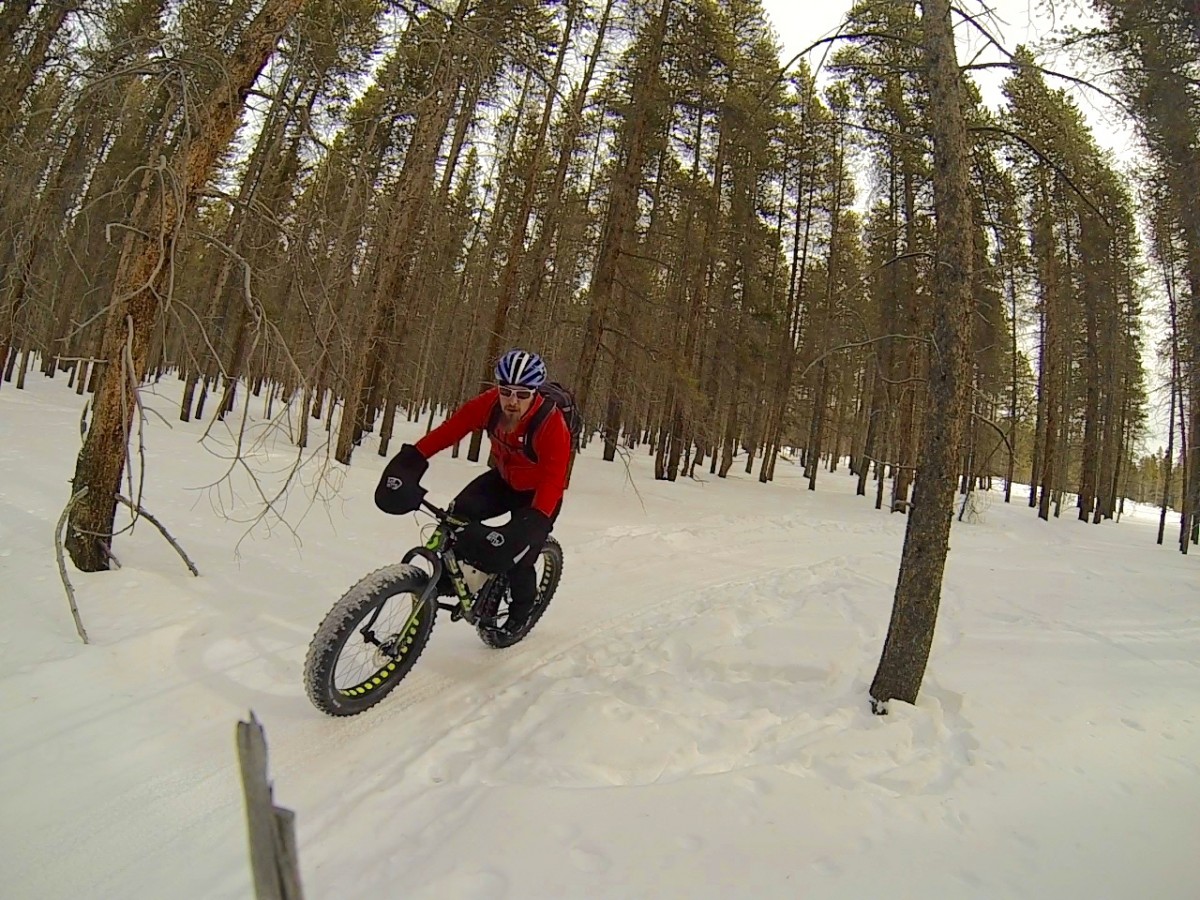Extremities are the first parts of the body to get cold on a mid-winter fat bike ride and the last to warm up. As they say, the best defense is a good offense, and the easiest way to combat cold-fingered misery is to keep your fingers from getting cold in the first place. Enter the Extreme Cold Mountain Mitts pogies from Bar Mitts.
Bar Mitts has been in the pogie game for so long that many people use “bar mitts” as a generic term when referring to pogies. While they were one of the first pioneers in the pogie market, their products still have a basic, bare-bones design and are easy to use and install
Specs
The Extreme Cold Mountain Mitts are one of the newest products in the Bar Mitts line. They’re made of waterproof neoprene measuring 6mm thick, with warm fleece on the inside and nylon lamination on the exterior. The neoprene itself features “a closed cell construction [with] air bubbles that serve as insulators,” according to Bar Mitts.
Other key features include removable velcro cuffs which you can use if the temps are really cold, or remove if you don’t need them. The mitts include expandable bar end plugs, which hold them in place on your handlebars. Zippers at the front of the mitts provide temperature control and ventilation, and also aid in the ease of installation.
Actual weight: 500g for the pair–250g per pogie.
Installation
Installing the Bar Mitts on your fat bike is dead simple. Just unzip the front zippers and slide the mitts all the way over you controls. Reach in and push the plug into the end of your handlebars (having already removed any bar end plugs). Zip the zippers shut, and fasten the velcro around the bars to push the mitts into place. Finally, reach in with an allen key and tighten the expandable plugs to keep the mitts in place.
Out on the Trail
Learning Curve
If you’ve never used them before, there’s a bit of a learning curve to riding with pogies. Specifically, you can’t keep pulling your hands off the bars to fiddle with things, take drinks, etc., as naturally as you would without pogies–it takes a little extra forethought. However, the ease of moving your hands in and out of the pogies depends largely on whether or not you have the cuffs installed.
Personally, I found the cuffs to be annoying, and so removed them and rode without cuffs. While these would be great for keeping in as much warmth as possible in really cold conditions, during my rides in high winds and air temps down into the teens, I still had no need for the cuffs.
General Pogie Observations, and Bar Mitts Testing
After working through the learning curve, I was able to take a step back mentally and compare riding with pogies, and specifically these Bar Mitts, versus riding without them. While some of these observations will apply to most any pogie, I think they’re important to note.
During the course of my test, I used full-finger gloves inside my pogies that are normally only warm enough down into the 40s. However, with the pogies, I rode in temps down into the teens, including riding into a brutal headwind whipping down off the Sawatch mountain range. During the entirety of my test, my hands stayed warm and toasty inside the Mitts.
The Bar Mitts proved to be an excellent barrier to keep wind off of my hands. Simply put, either descending at speed or riding into a headwind, I felt no wind on my hands–the Bar Mitts blocked 100% of the wind. With hands wrapped tightly around the bars, keeping the wind off is the number one thing that you can do to keep your hands warm. While the Mitts did work to keep my body heat in and around my hands, I think cutting the wind was the most important task that they performed.
The other major, general benefit of pogies is that since you can wear much thinner gloves in the Mitts, you have improved dexterity of the controls when compared to thicker winter gloves. While visually the pogies may look bulky and awkward, in reality putting the wind barrier over the grips, shifters, and brake levers in their entirety means that you have a more natural feel for the controls, equivalent to normal summer riding.
However, I did find that sharp cornering and leaning the bike felt a bit odd with the Mitts, as I couldn’t roll my arms back and forth as much as normal. However, with most cold-weather fat biking you’re not cornering as hard as you would on a normal mountain bike in a berm in the summer, so this issue was rarely a problem.
Finally, one other unexpected bonus that I noted from using the Bar Mitts is that when I’d stop to take photos, mess with my gear, or lay my bike down for any reason–whether intentional, or unintentional in a crash–having the mitts over my bars kept my grips dry. In the past, my hands have always gotten the wettest and coldest after a fat bike crash when my grips and controls would pack up with snow. Even if I could keep my gloves from getting soaked during the crash itself, having to clean off and then grip somewhat snow-packed grips ensured cold hands. The Bar Mitts keep my grips dry and snow-free at all times, which in turn makes for happy hands throughout the entirety of my ride.
As for the Bar Mitts specifically, I found their construction to be durable, reliable, and the installation and ease of use to be top-notch. While perhaps you could find lighter or more stylish pogies from a different brand, it’d be tough to improve upon the utility and functionality that the Bar Mitts provide.
MSRP: $125
Thanks to Bar Mitts for providing the Extreme Mountain Mitts for review.




























